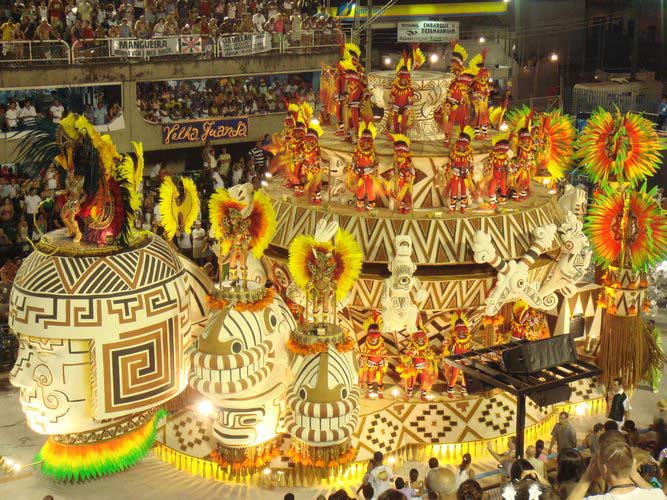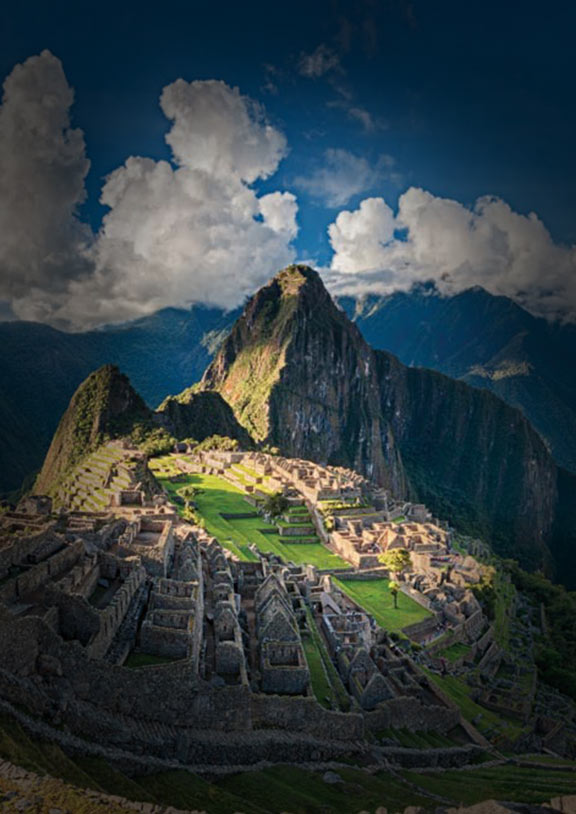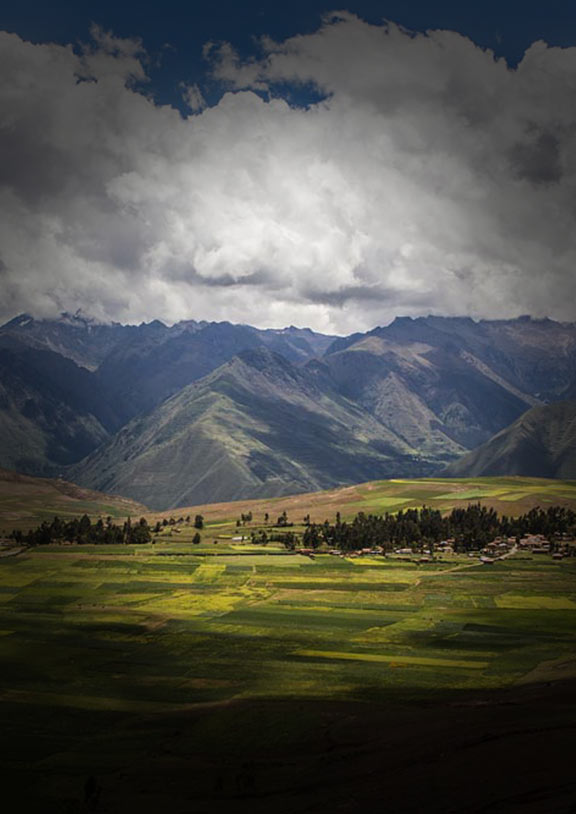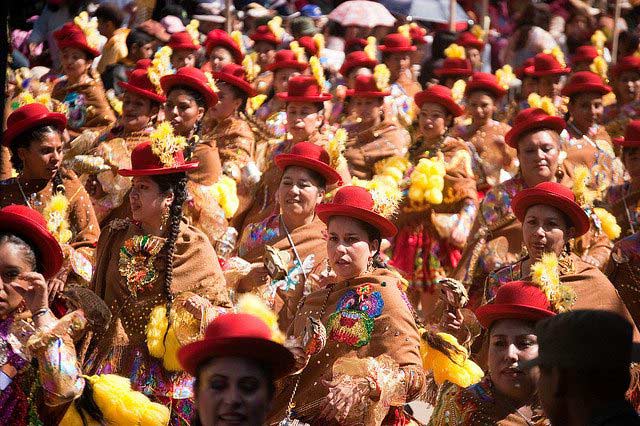Most people are familiar with Carnival from world-famous festivities such as the street parades of Mardi Gras in New Orleans, masquerade balls in Venice, and the samba floats of Carnaval in Rio de Janeiro, where it has achieved fame as the world’s biggest party.
Celebrated in February, Carnival is a festival with roots in Catholic religion. It precedes the 40 days of Lent, a time when believers attempt to be pious by fasting and abstaining from pleasures. Historically, Carnival celebrations allowed communities to let off some steam with a huge party and to indulge in quantities of food and drink before the commencement of the more sober and solemn Lenten period. Costumes and masks allowed individuals to find a bit of anonymity in the general revelry.
Spanish and Portuguese colonists took Carnival and spread it across South America, where it has since evolved into many forms, its medieval Catholic core mixing with the spiritual beliefs and practices of enslaved Africans and colonized indigenous communities. Carnival in South America is an incredibly diverse and intensely hybrid celebration, difficult to describe in general terms. But wherever your South America vacation take you, whether you travel to Brazil, Peru, Ecuador, or Argentina, you are guaranteed a party experience like no other, with music, dancing, parades, food and drink, and non-stop festivities that can last for days.
If you are planning to travel to South America in early 2013, Carnival is probably one of the best cultural events around which to base a vacation. Upcoming posts on this blog will help you do this by highlighting different aspects of Carnival in South America, including iconic destinations such as Rio de Janeiro and off-the-beaten-track celebrations in Oruro in Bolivia. Festivities can get sticky and rowdy; based on their personal experiences, LAFL’s expert Travel Advisors will provide tips to travelers who want to participate in Carnival parties, from what to wear to how to prepare the perfect mix of paint and water.
We’ll also highlight specific traditions, such as the following: when you travel to Ecuador, Peru, or Bolivia in October or November, you might see Guagas de pan or Tanta wawas, sweet bread in the shape of bundled babies. In Quechua, guagua or wawa means baby. This special type of bread is consumed on a few occasions, but especially in the weeks leading up to November 2, or All Saints’ Day in the Catholic calendar, when families visit the graves of their loved ones and make food offerings that include bread babies. Tantawawas make a second appearance on Carnival when they are exchanged between children and their godparents. So if you run into a basket of bread babies like in the picture below, don’t hesitate to “adopt” one – they’re delicious!
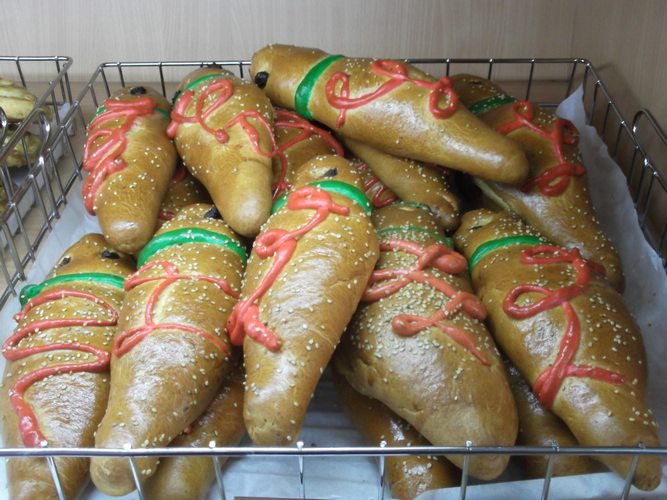
In Ecuador, guagas de pan are sometimes baked with fruit , cheese, or manjar fillings; while in Peru, t’anta wawas also come in non-baby shapes such as horses, ladders, or crowns.
Our travel advisors at Latin America For Less are specialists in travel to Peru, Brazil, Ecuador and other top destinations in South America. Contact us to start planning your dream South America vacation.
Anabel has been exploring the length and width of South America since 2010. Ditching preconceptions, settling into the local pace, and embracing the unexpected are the tenets of her philosophy of travel – and life.

